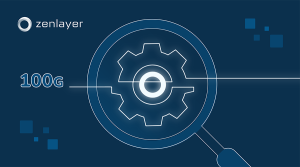If you’ve played any online games, you’re probably already familiar with ping – another word for latency used in the gaming community to describe the delay of signals traveling between a player’s device and the game server being played on. High ping is disruptive to the gaming experience overall as it can slow movement and produce a variety of graphical glitches that make games less enjoyable. In competitive online multiplayer games that require split-second reflexes like multiplayer online battle arenas (MOBAs) and first-person shooters (FPS), however, high ping can even be deadly (virtually) as it creates significant input delays that turn the tide of battle for worse.
The costs of high ping: frustrations, lost matches, and bans
For competitive players, a dropped game from being disconnected due to severe latency issues is particularly troublesome as it can cost them the match and lower their hard-fought rankings on leaderboards – some of which take months or even years to achieve. Some games also institute policies that automatically ban players for infractions that include “rage quitting” during matches after a certain number of occurrences — even though it’s nearly impossible for game servers to distinguish between players dropping out due to frustrations or being kicked off from extremely high ping and subsequent unsuccessful attempts to reconnect.
According to a recent survey on gamers:
– Nearly all experienced latency issues at some point.
– A third will quit their game or session entirely when they experience latency.
– Over half blamed their experienced latency on developers, publishers, or the company managing the game servers.
Can you blame them? After all, who wants to keep playing a slow, choppy, unresponsive game that’s nearly impossible to win regardless of the level of skill?
From lagging to smooth sailing – how to win your players back
A portion of latency issues are no doubt out of your hands due to user error or outdated player gear. Fortunately, however, there are a few things you can do on your end to improve experience for your players to keep them logged in and engaged. Let’s explore some of the ways you can help reduce ping to make games more enjoyable for your players.
1. Optimize your gaming network
By minimizing the amount of data that needs to be transmitted between a player’s device and your game server, players will experience substantially reduced pings that make for smoother experiences. There are a number of ways to optimize the flow of data in a game’s network like compressing data to decrease file size, grouping requests together to reduce the overall data load, and using client-side prediction to immediately process the outcome of player actions before they’re confirmed by the server, which helps lower input lag and smooth out gaming interactions.
2. Distribute through a CDN
A content delivery network (CDN) is another great way to lower ping for your players. A CDN is a group of geographically distributed servers that cache content physically closer to users for quick access. With the help of a CDN, you can help ensure that game data is delivered to your players as quickly as possible by routing their requests to be fulfilled by whichever server is closest to where they’re playing your game. This translates to lower ping for your players and snappier, more responsive gaming experiences that keep them wanting more.
3. Beef up your game servers
Oftentimes, gaming performance is hindered by outdated hardware on the side of your end user – not much you can do there. Other times, however, your game server could be the culprit to their high ping. Outdated processors, GPUs, and routers that process data inefficiently can create bottlenecks that reduce performance to create lags, glitches, and other undesirable effects for your players. When you upgrade your server to the latest hardware (while ensuring it has sufficient bandwidth and is configured to handle the maximum number of concurrent players), you’ll provide your players with smoother gaming experiences.
4. Get close with edge compute
If your game’s reach is global and player base is distributed around the world, a better way could be hosting your game with a trusted cloud services provider that offers compute at the edge. Bare metal servers and virtual machines (VM) can store and process game data close to your players for reduced ping and more fluid gaming experiences. This is particularly helpful for MOBAs that rely on synchronized team coordination or turn-based multiplayer games where the time it takes to get through each player’s turn can be shortened by reduced latency.
Edge compute servers are inherently easy to scale and deploy, often within minutes, which means that not only is it easy for you to expand to satisfy a growing player base, but load balancing can also be swiftly employed to split traffic between multiple servers to elevate performance across the board. Plus, your service provider is on the hook to ensure your rented server’s hardware is well-maintained and running efficiently, reducing strain on your internal resources.
5. Be transparent with your players
Sometimes all it takes to calm nerves and placate players is more open communications. No one wants to pop in for a quick 20-minute match only to have it turn into a 40+ minute fest of latency issues that span disconnections, reconnections, lags, rubber banding (as seen when characters or objects “fly” or teleport from one point to another inexplicably), or other latency issues before the match can be completed. Being more transparent about the state of your game, displaying ping time visibly, and providing information about the number of players on particular servers, etc. can help players determine the best time to play. Plus, when players are informed about the current load on the game servers, less players will be joining games during peak hours or hop into already taxed servers. This results in more even distribution of players throughout the day and across servers to help lower latency for all players in the game.
How Zenlayer can help keep your players happy
Although latency is an unavoidable issue for games as it often significantly impacts player performance and experience, there are steps that you can take as a gaming company to reduce ping and keep your players happy.
Zenlayer’s 5,400+ global peers and 290+ edge nodes can maximize performance for your gaming network and extend the reach of your game to more players – no matter where they are in the world. So, if you’re looking for a partner with the industry experience, technical know-how, and a suite of advanced edge compute solutions to help your company lower ping for your players and grow your player base, check out our ebook on gaming infrastructure and talk to a solution expert today!







